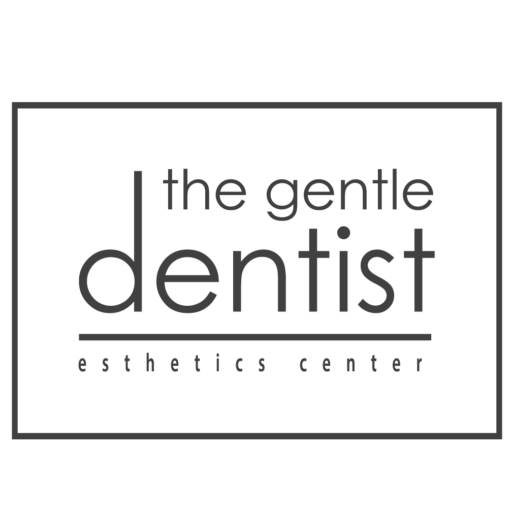Problems that can be treated with Dental braces
Invisible Dental braces with removable aligners
Vestibular braces made of ultra-aesthetic materials
The Importance of Early Dental Braces
Improving chewing and speech function
See also: What is dental calculus cleaning?
Follow us on Instagram The Gentle Dentist
Dental braces (orthodontic)
A beautiful smile with regular and healthy-looking teeth is a goal that everyone wishes for. However, some may suffer from problems such as crowded teeth, gaps between teeth, or crooked teeth, all of which cause an unattractive smile and require the care of a dentist to correct the situation. What is the solution that the dentist offers to treat such problems? It is Dental braces( Dental braces). So what are Dental braces? And what is the importance of early Dental braces?
Dental braces deal with diagnosing and treating misaligned and irregular teeth in the jaw area. Initially, Dental braces were directed toward treating adolescents, but today about 30 percent of Dental braces patients are adults.
Healthy and proper alignment of teeth has several benefits, such as ease of cleaning, maintaining oral hygiene, speaking clearly, and a beautiful smile. From here we realize that the earlier Dental braces treatment begins, the faster the problem can be successfully solved.
issues that can be treated with Dental braces
These are some common conditions that are treated with Dental braces:
Anteroposterior deviations:
A discrepancy between a pair of closed jaws is known as an anteroposterior discrepancy or anteroposterior discrepancy. An example of this discrepancy is an overbite (where the upper teeth are further forward than the lower teeth) or an underbite (where the lower teeth are further forward than the upper teeth).
Crowding:
Overcrowding is a common problem in Dental braces. It occurs when there is not enough space for the normal growth and development of permanent teeth.
Cosmetic problems:
A beautiful straight smile can be marred by a single misaligned tooth. This tooth can be easily and accurately realigned by an orthodontist. Alternatively, orthodontists may also work to reshape and restructure the lips, jaw, or face.
Types of Dental braces
There are different types of systems in Dental braces, or different techniques and accessories that orthodontists use to align and level teeth to improve their aesthetics and maintain oral health. Dental braces are the science of dentistry that treats dental and bite abnormalities and the art of making your teeth function perfectly to achieve a complete balance of the chewing system, which has an impact on our well-being and general health, and usually includes an aesthetic and coordination benefit associated with it.
Fixed Dental braces
Fixed Dental braces include those techniques in which the following are used:
Multi-arch devices:
Consisting of several brackets attached to the teeth, either metal or made of other materials such as sapphire or porcelain, wires, and other flexible or metal accessories with the ability to apply forces to the teeth. The great feature that they include is that the accessories called brackets are fixed to the teeth throughout the treatment period and cannot be removed by the patient.
Fixed vestibular appliances:
They are the well-known brackets that are visible and placed on the outside of the dental arch and which, despite the modern and advanced systems currently available, are generally more economical. As we said, they can be metallic or aesthetic depending on the material of manufacture and their appearance.
Lingual fixed appliances:
They are brackets that are placed on the inside of the teeth, leaving the outside of the teeth free. The main disadvantage is that they are more expensive because they are custom-made for the patient and, although they are more aesthetic than traditional braces, they can be uncomfortable for daily hygiene or speech.
Invisible Dental braces with removable aligners
It is a transparent Dental braces technique made of a revolutionary plastic material, which adapts perfectly to the patient’s teeth and can be removed for eating and brushing. Each treatment in this technique is personalized, digitally planned, and completely customized. After studying Dental braces, planning, and diagnosis are made based on the patient’s malocclusion, and the aligners are manufactured based on this virtual treatment plan.
Therefore, three types of Dental braces are considered more aesthetic, and sometimes all of them are included in invisible Dental braces.
Invisalign
Invisalign is the oldest Dental braces technique using removable Dental braces appliances (about 20 years of experience), the most advanced, the most studied, and patented. Also among the types of invisible Dental braces, it is the most experienced currently (more than seven million patients treated worldwide). It is removable and splints made of completely transparent plastic materials are used with some attachments to push the teeth into the position they should occupy and better control the application of forces, making them more precise.
Vestibular braces made of ultra-aesthetic materials
This type of Dental braces consists of brackets and direct buccal bonding wires, which are largely transparent because they are made of polycrystalline materials of the sapphire type or advanced ceramics. Not all materials used to manufacture transparent braces provide the same aesthetic appearance, design, durability, and precision as Advanced Braces® or braces made of ultra-resistant sapphire ceramics.
Lingual braces
Lingual braces consist of colored metal brackets (gold or platinum) designed to measure the lingual side of the teeth. These types of dental appliances are designed to be fixed on the inside of the teeth, which is more regular, and therefore requires complete manufacturing and customization for each case. They have been improved and have a very thin profile that is not noticeable at all and makes them more comfortable and easier to adapt.
Their disadvantages are the high complexity of the manufacturing and application techniques, with long hours of adjustment in the clinic, difficulty in hygiene or speech, and some discomfort typical of all fixed appliances,
The Importance of Early Dental Braces
Early Dental braces are not just about straightening teeth, but also about correcting underlying problems that may affect long-term oral health. By intervening at an early stage, problems such as malocclusion, crowding, open bite, crossbite, protruding teeth, and others can be prevented or corrected.
Improving chewing and speech function
Correcting the alignment of teeth not only improves the aesthetics of the smile but also improves chewing and speech function. Children who receive early Dental braces treatment can see a significant improvement in their ability to bite and chew food properly, as well as improve pronunciation and speech.
Conclusion
A healthy smile and good dental function have a direct impact on children’s self-esteem and confidence. This is where the importance of early Dental braces comes in. By correcting dental problems at an early stage, the development of complexes related to the appearance of teeth is avoided, especially during adolescence, which is a more complex stage in terms of self-perception and social relationships. Therefore, Dental braces treatment at an early age allows children to develop a positive self-image and fully participate in social and recreational activities.
See also: What is dental calculus cleaning?
Follow us on Instagram The Gentle Dentist
Sources
- https://my.clevelandclinic.org/health/treatments/24601-teeth-braces
- https://www.nhs.uk/conditions/braces-and-orthodontics/
- https://www.webmd.com/oral-health/braces-and-retainers
- Myth or Fact? Everything You Need to Know About Teeth Whitening at Home
- Dental Implants: The Perfect Solution for Tooth Loss and Restoring Self-Confidence
- Secrets of a Healthy Mouth: Daily Habits That Protect Your Teeth from Cavities
- Thumb sucking in children and its effect on dental health.
- Benefits of regular teeth cleaning

